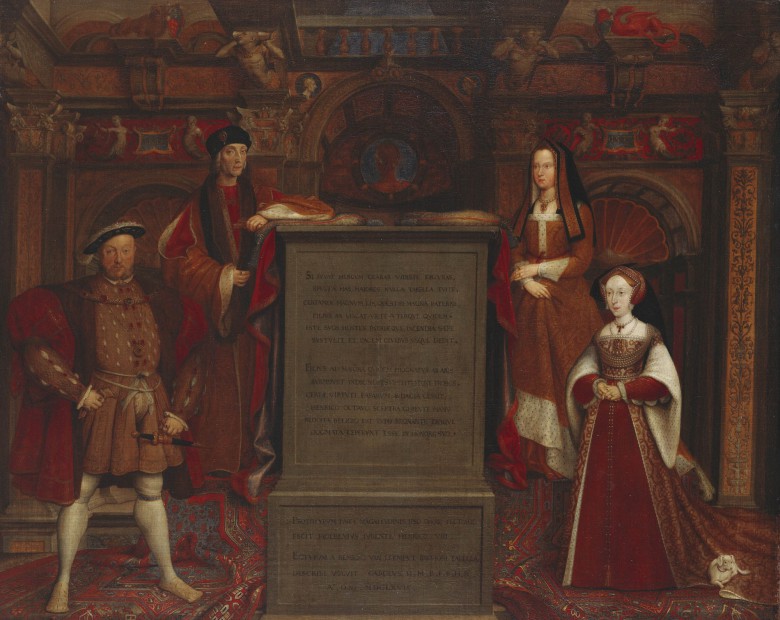28th January 2015
Today in 1457, Henry Tudor, the future Henry VII, was born. His son Henry VIII was to share the anniversary, for he died ninety years later on his father’s birthday.
Henry VII was a very distant claimant for the Lancaster throne. He was the son of thirteen-year-old Margaret Beaufort, the great-granddaughter of John of Gaunt and his mistress, later third wife, Katherine Swynford. The descendants of Gaunt’s two previous wives stood between Margaret and the throne, including the reigning King Henry VI, and he had a son with his wife Margaret of Anjou. Henry's father was Edmund Tudor, half-brother to the king, born to the king's mother after the death of her royal husband when she had children with and may have married a gentleman-server in her household. Nevertheless, through his own determination and the endless conspiracies of his mother, Henry fought and won the throne of England at the Battle of Bosworth Field.
The Tudors ended the civil war of the Wars of the Roses, but did not bring peace. They fought wars against France and Scotland and put down several rebellions against their rule. Henry VIII’s repression of the Pilgrimage of Grace, when the North of England rebelled against his break with Rome, was particularly brutal. At his death aged fifty-five, he was a feared tyrant whose executions had included two of his six wives and his mother’s sixty-seven-year-old cousin, Margaret Pole.
Henry VIII left an England very different from the one that his father had known, spreading royal power and destroying rival heirs. He had defied the Pope and named the monarch as the Head of the Church in England, he had dissolved the abbeys, monasteries and chantries, seizing the wealth of the Church for himself. He had approved English translations of the Bible and the liturgy, but died a Catholic. He was survived by his sixth wife, Kateryn Parr, who he had threatened with arrest because of her enthusiasm for Reform. Despite having been regent during Henry’s reign, Kateryn was denied a position of power under her stepson, the nine-year-old Edward VI, the only surviving son of Henry’s desperate pursuit of an heir. Edward died just six years later.
The Tudor dynasty that the father founded and the son maintained lasted only three generations, a blink of an eye compared with 331 years of Plantagenet rule, and yet has captured our imagination more than any other. Henry VIII’s colourful and ultimately unsuccessful pursuit of male descendants, his dramatically unfaithful love life, his descent into religious and political tyranny, and his break from Roman Catholicism, have made this one of the most turbulent and fascinating periods in English history.
Portrait of Henry VII, Elizabeth of York, Henry VIII and Jane Seymour from the Royal Collection Trust/© Her Majesty Queen Elizabeth II 2014.
